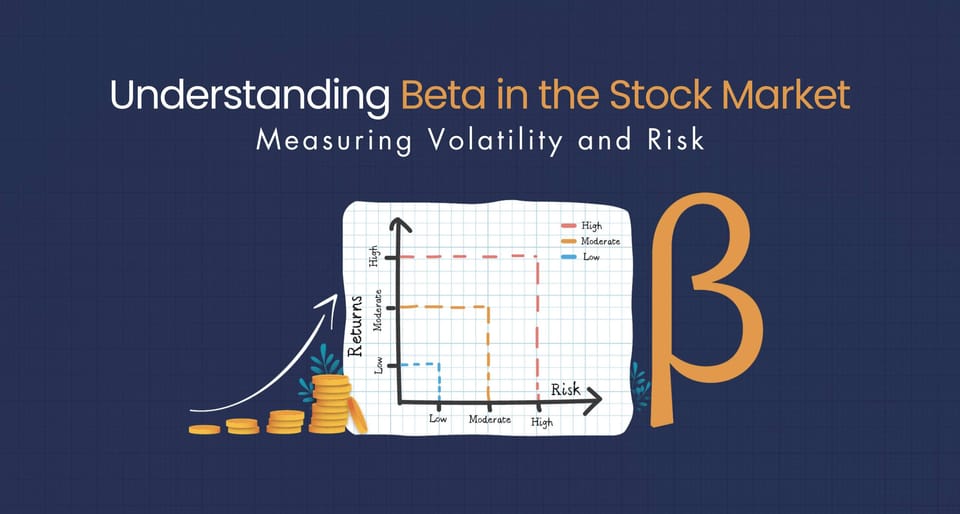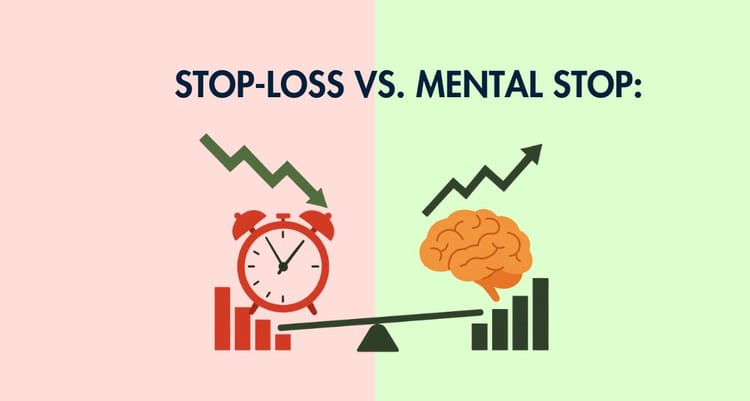Understanding Beta in the Stock Market: Measuring Volatility and Risk

When it comes to investing in the stock market, one word that often pops up is "beta". But what does beta mean, and why is it so important? In simple terms, beta helps investors measure a stock's volatility and risk in relation to the overall market. Think of it as a guide to understanding how a stock reacts to market swings.
What is Beta?
Beta is a number that shows how much a stock’s price moves compared to the market.
- If the market goes up or down, beta tells you how much a stock might move in the same direction.
- The market, such as the NIFTY 50 or S&P 500, is assigned a beta of 1. Stocks are then compared to this benchmark.
In simple terms:
- Beta > 1: The stock is more volatile than the market.
- Beta < 1: The stock is less volatile than the market.
- Beta = 1: The stock moves in line with the market.
- Beta < 0: The stock moves in the opposite direction to the market (rare but possible).
Why Does Beta Matter?
For investors, beta is a useful tool to understand risk and align it with their investment goals. Here’s why beta is important:
- Measures Volatility:
Beta helps you understand how much a stock's price fluctuates compared to the market.- High beta stocks are riskier but have the potential for higher returns.
- Low beta stocks are more stable and less risky.
- Helps with Portfolio Planning:
Knowing the beta of stocks in your portfolio can help you balance risk and reward. - Predicts Stock Behavior:
Beta provides a rough idea of how a stock might react to market movements, helping you make informed decisions.
How is Beta Calculated?
Beta is calculated using statistical methods that compare a stock’s returns to market returns over a specific period.
The formula is:
Beta = Covariance (Stock, Market) ÷ Variance (Market)
Types of Stocks Based on Beta
Let’s break down the types of stocks based on beta and how they behave:
- High Beta Stocks (Beta > 1):
- These stocks are more volatile than the market.
- They tend to rise faster during bull markets but also fall harder during bear markets.
- Examples: Growth stocks, technology companies, and small-cap stocks.
- Low Beta Stocks (Beta < 1):
- These are less volatile and offer more stability.
- They perform steadily in both bull and bear markets, making them ideal for conservative investors.
- Examples: Consumer staples, utilities, and large-cap companies.
- Negative Beta Stocks (Beta < 0):
- Rare stocks that move in the opposite direction of the market.
- Examples: Gold mining stocks, as gold often rises when markets decline.
Beta in Action: A Simple Example
Imagine the market increases by 10%. Here’s how different beta values would affect a stock’s movement:
- Stock A (Beta = 1.5): The stock may rise by 15% (1.5 × 10%).
- Stock B (Beta = 0.8): The stock may rise by 8% (0.8 × 10%).
- Stock C (Beta = -0.5): The stock may fall by 5% (-0.5 × 10%).
Similarly, if the market falls by 10%, the same beta values would predict how much the stocks might decline.
How to Use Beta as an Investor
- Risk Appetite:
- If you’re a risk-taker, high beta stocks may be for you, as they offer the potential for high returns.
- If you’re a conservative investor, stick with low beta stocks for stability.
- Portfolio Diversification:
Beta can help you build a well-balanced portfolio by mixing high and low beta stocks to manage risk. - Market Conditions:
- During bull markets, high beta stocks can amplify your gains.
- During bear markets, low beta stocks can protect your portfolio from steep declines.
Limitations of Beta
While beta is a powerful tool, it’s not perfect. Here are a few things to keep in mind:
- Past Performance:
Beta is based on historical data and may not predict future performance accurately. - Ignores Fundamentals:
It doesn’t account for a company’s financial health, growth potential, or competitive position. - Short-Term Focus:
Beta works better for short-term market movements and might not be ideal for long-term investors.
Beta vs. Volatility: What's the Difference?
Although beta is often associated with volatility, they are not the same:
- Beta: Compares a stock’s volatility to the market.
- Volatility: Measures the degree of variation in a stock’s price, regardless of the market.
Is Beta Enough?
While beta is a great starting point to measure a stock’s risk and volatility, it’s just one piece of the puzzle. As an investor, you should combine beta with other metrics like earnings growth, valuation ratios, and debt levels for a complete analysis.
Whether you’re a risk-taker aiming for high returns or a conservative investor seeking stability, understanding beta can help you make smarter, more informed decisions. Remember, the key to successful investing is not avoiding risk but managing it effectively.
So, the next time you look at a stock’s beta, think of it as a window into its behavior—and use it to align your investments with your financial goals.
“Know your beta, know your risk, and invest wisely!”






Member discussion